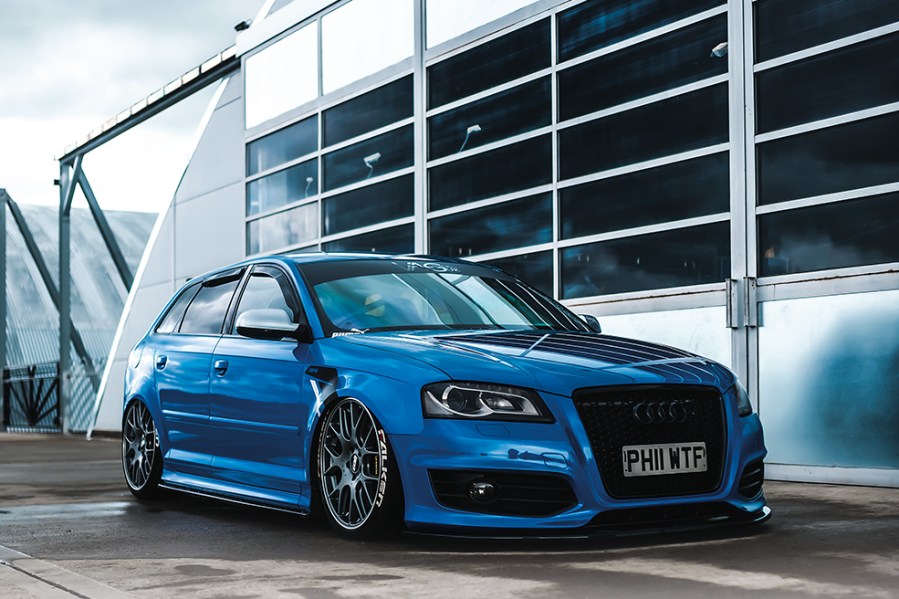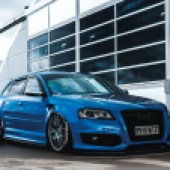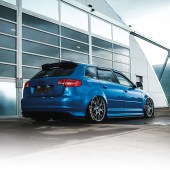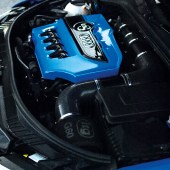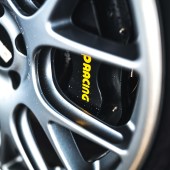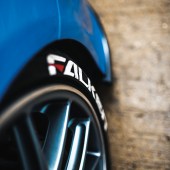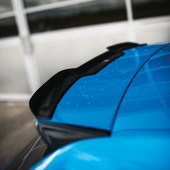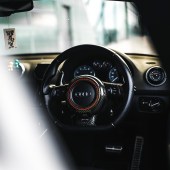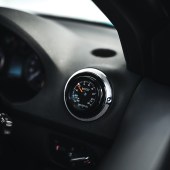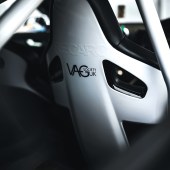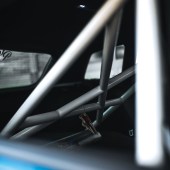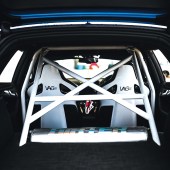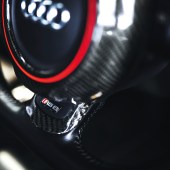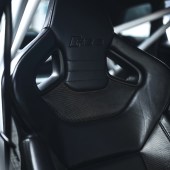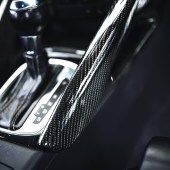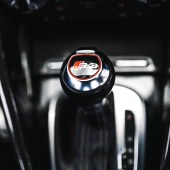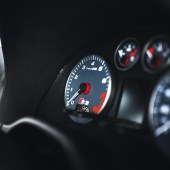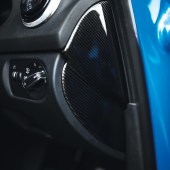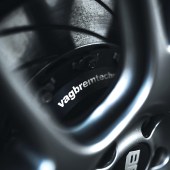The Golf R might have become the default for tunable, tractable high-performance daily drivers, but Phil Griffiths’s bagged Audi S3 show machine makes a good case for the alternatives.
Feature from Performance VW magazine. Words: Alex Grant. Photos: Mark Rodway.
When it launched in 2002, Volkswagen’s first R-badged Golf was just as much of a step into the unknown as the Mk1 GTI had been 30 years previously. The R32 had its roots in that familiar hot hatch all-round capability but let its wilder side run riot and found an audience much bigger than Wolfsburg ever imagined during development. Today, one in ten UK-bound Golfs is an R, and that badge has featured on more than 250,000 sold worldwide since those first Mk4s. Audi never quite had the same centre-of-spotlight appeal with the S3, despite a three-year head start, but it also hasn’t missed out on the perks of that popularity.
“It seems like everyone is starting to forget about these,” shrugs Phil Griffiths, as we ask what lured him towards the S3. “I had plans to build a fast road car that I could use on track and my sights were set on a Mk6 Golf R, but they’re really sought after, and the prices are crazy. That would have meant I couldn’t do what I wanted to do with it. The Audi S3 has the same running gear, but a cheaper price tag because it doesn’t get all the hype. It’s a no-brainer.”

There’s a deep-rooted need for that performance here. Phil was racing in motocross events while he was in primary school, then grew up building roadgoing motorbikes with his dad. But it was the slow-burning E30 3 Series project happening in the background that left the lasting influence. Chipping away at the restoration sparked a curiosity for all things mechanical, sowing the seeds not only of his future car ownership, but his career too. The S3 is bankrolled by a day job working as an electrical technician at Rolls-Royce’s jet engine facility in Bristol, immersed in the cutting edge of next-gen aircraft tech.
“I’ve always been someone who enjoys fixing broken shit, so this job has its perks,” he smiles. “, I’ve always wanted to get my hands stuck in and restore and build my own car. But, not having a lot of money growing up, I couldn’t see myself committing to something I couldn’t enjoy, which is why I’ve mostly gone for modern cars. You get more for your money, and they’re more reliable, otherwise I’d have carried on with the classic car route.”
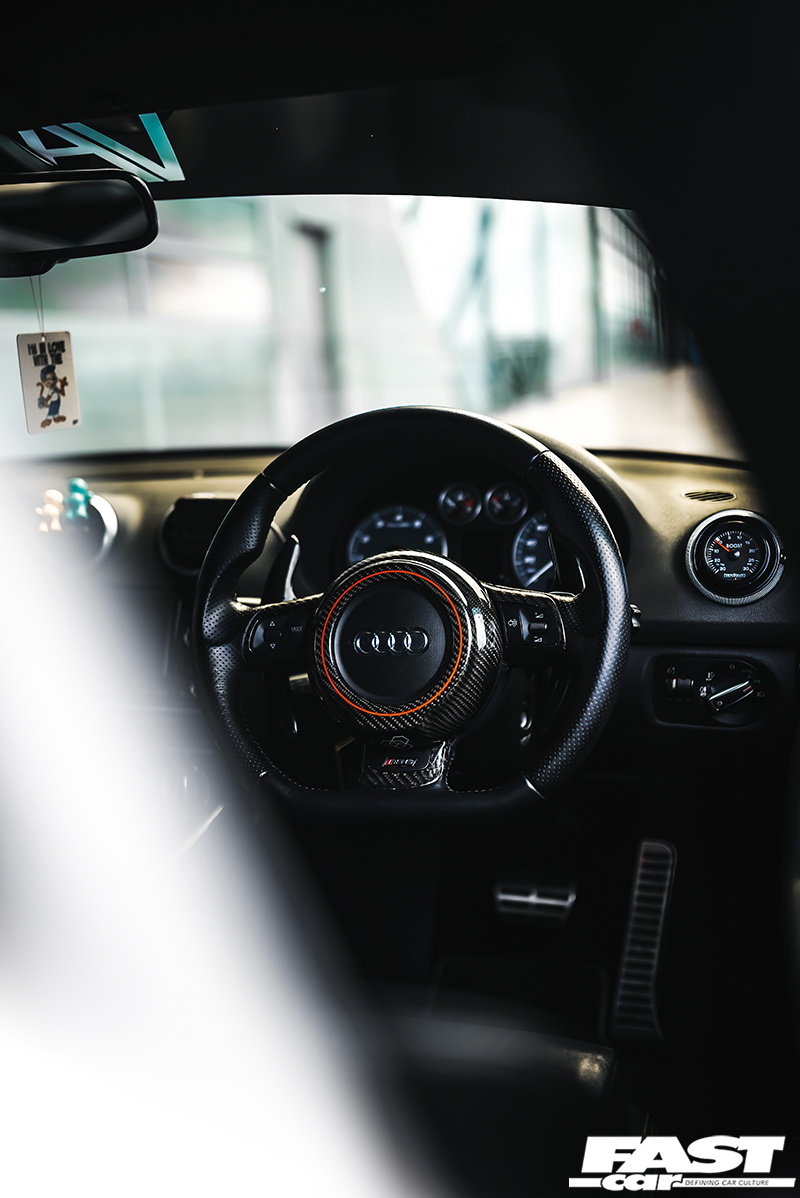
However, that approach hasn’t always spared him the hassle. New driver insurance hobbled Phil’s performance ambitions, landing him with a tardy 1.6-litre Mk4 Golf and a gearbox that wasn’t up to withstanding the demands of his heavy right foot. The PD130 Fabia vRS that followed was a move in the right direction, but his current love of the noise and response of turbocharged engines stems from hot Vauxhalls instead; a Corsa and Astra VXR, both united by one important shortfall.
“My friend Rob bought a pre-facelift 8P S3 and, being four-wheel drive, he’d smoke the VXRs off the lights because I’d just be spinning up,” he tells us. “That’s what opened my eyes to four-wheel drive, but instead I had to sell the VXR to fund a house when I relocated to Bristol. So, I ended up using a diesel A4 as a daily car for about two years, and then buying a Mk6 Golf GTI, which was awesome but still used to wheelspin a lot. A Mk6 R would have been the obvious upgrade, but I found I could get a facelift 8P S3 instead. It just made sense.”
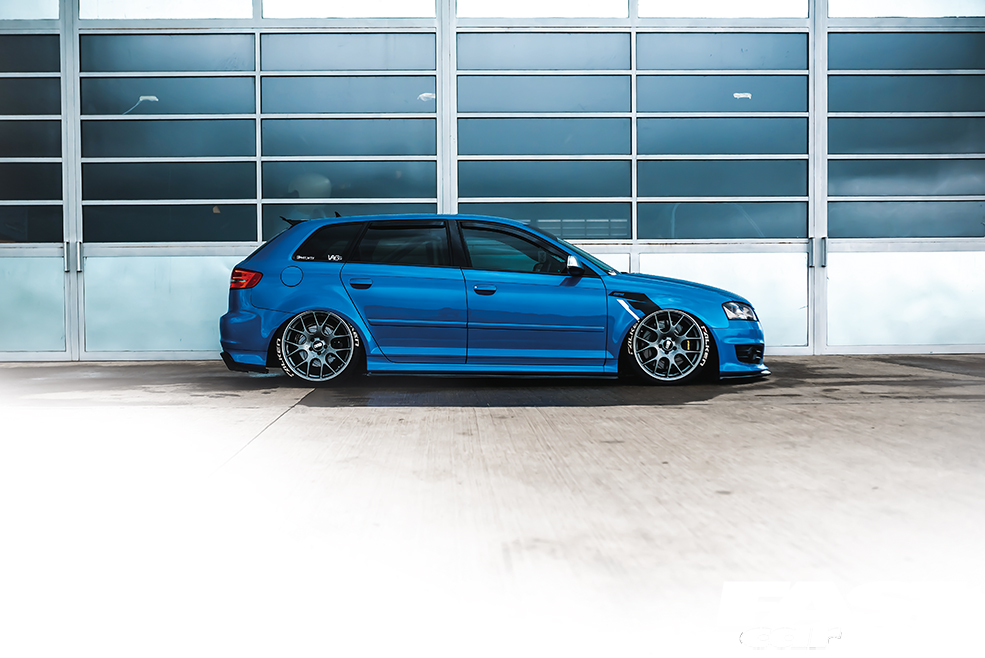
This also offered a chance to be picky; a four-or-five-month hunt for the right car before this sprint blue Black Edition came up as a classified ad in Manchester. It had been the previous owner’s weekend toy for six years and was 100% factory spec – which lasted four weeks in Phil’s hands before it was back in Manchester, this time calling in on Awesome GTI. The S3 had flown just under the radar, but that CDL-code 2.0-litre TFSI engine definitely hasn’t. It’s broadly the same unit you’ll find in a Golf or Scirocco R, with no shortage of ways to wring out some more performance.
The powertrain in this car is built around APR Stage Two+ software and the matching transmission map, which offers faster shifts and launch control while keeping the factory safeties in place. There’s a race-spec front-mount intercooler behind the grille, the restrictive flaps in the inlet manifold have been taken out to improve airflow, and the map requires a higher-pressure fuel system to satisfy its appetite for super unleaded. With a Trackslag and non-resonated Milltek exhaust to get rid of the by-products, the Audi S3’s 390hp and 402lb/ft are more than enough to keep the Haldex system busy. Have traction, will play.
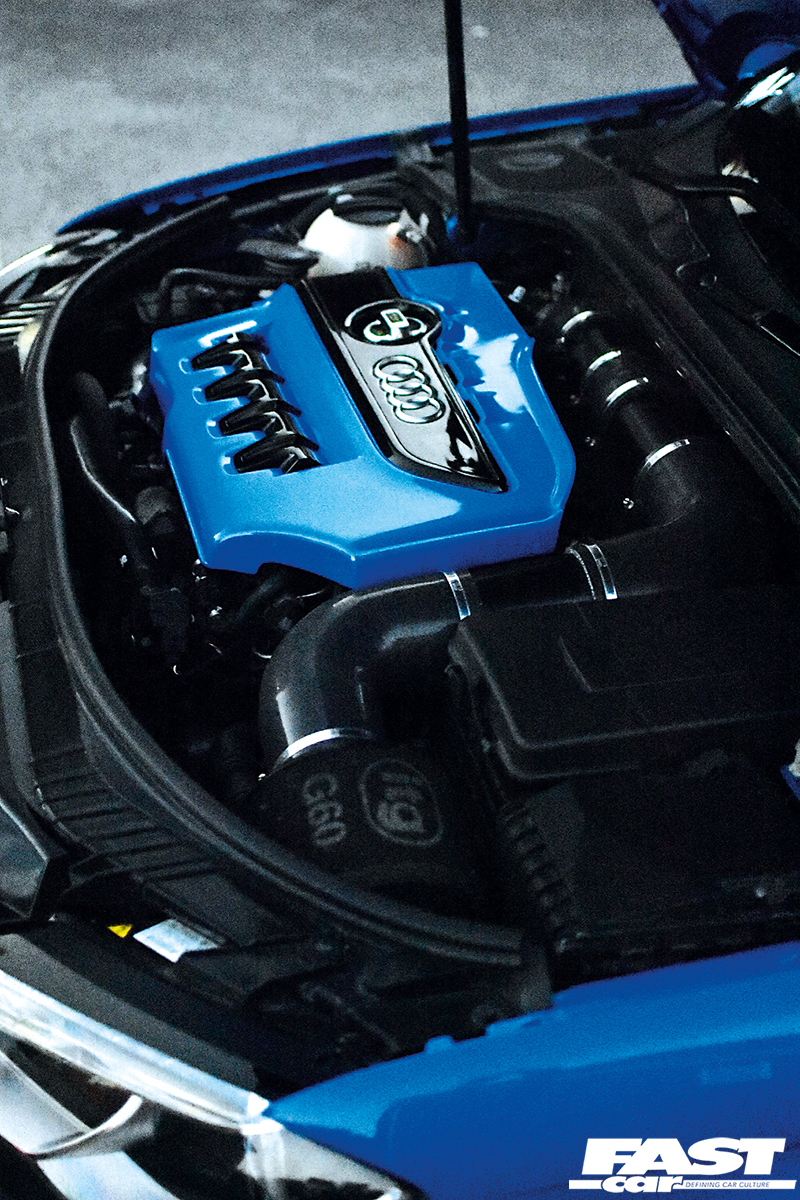
Phil admits getting carried away. “Honestly, it was a rookie mistake going straight to Stage Two+ instead of enjoying it in intervals,” he explains. “But the difference was phenomenal, with just shy of 400hp and all tied together with the gearbox software. It screams through every gear, just like my two-strokes would, back in the day.”
Even so, he quickly found room for improvements. Just weeks out of the workshop and, carving through the rock-lined road of Cheddar Gorge for a car show, he overheard two guys surprised by how quiet the S3 was considering the performance on tap. Within 24 hours, he’d systematically scrapped anything robbing the Audi of a full-throated soundtrack and given it a new trademark in the process. The plate, he says, was what most of his mates responded with when he’d pull up outside.
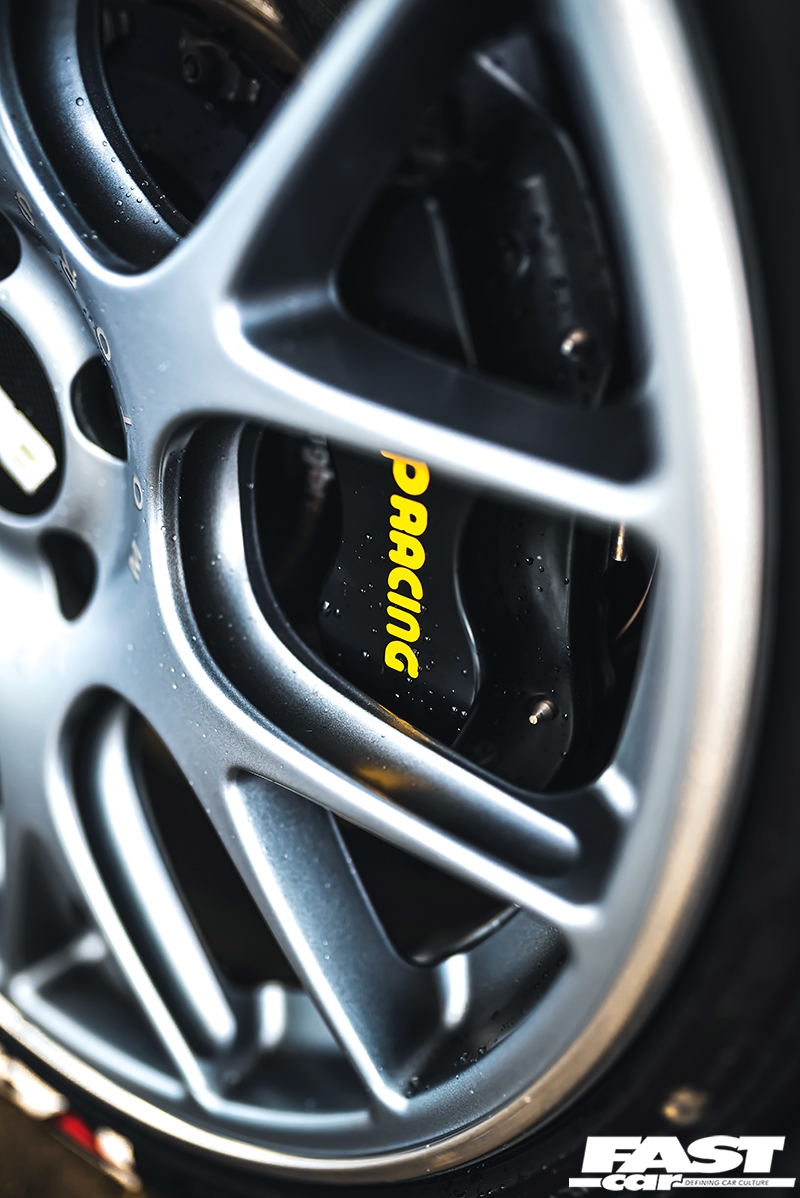
Of course, easy wins on the power front unravelled the usual list of other financial commitments. The S3 had become fast enough to monster the high-speed circuit at Castle Combe, but the extra power was ruthlessly highlighting the weakest components. Stock suspension had already made way for Bilstein B16 coilovers with thicker H&R anti-roll bars and a full set of polyurethane bushes. However, any supercar-baiting potential was being reined in by an unnerving dose of brake fade – a problem solved by packing a Vagbremtenic AP Racing big brake kit behind the spokes of its lightweight BBS CH-R wheels.
“It could be a bit intimidating on track – this is the fastest car I’ve owned and, by tuning it, I feel like you must keep on top of things, or you’ll start damaging stuff. So, when it started misfiring on the second track day, I shit my pants. I thought it would be something bad. It was just a bit of burn on the end of the plugs, so I changed them to iridium, and it was fine after that. Otherwise, it hasn’t missed a beat.”
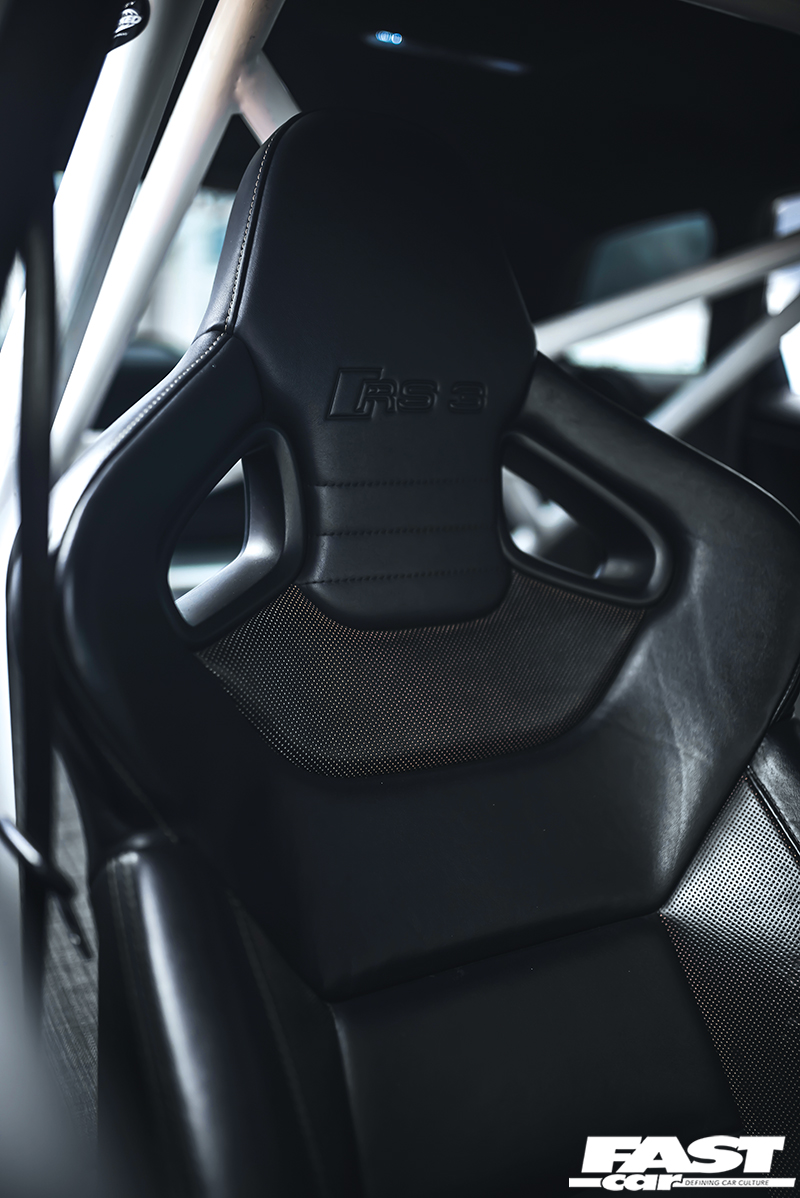
Changes had come quickly enough to propel the S3 from a stock weekend car to a spiralling high-performance daily driver within a year, but Phil had no plans to slow down. Still a regular at shows, he stumbled across Stuart Davis’s home-built 8P S3 at Ultimate Stance – an aired-out, sprint blue five-door, with Bentley leather and a stance no coilovers could deliver. Stopped in his tracks, it was the seed of a new set of ideas – beginning with the urgent need for less ground clearance.
This would be a tough balance to strike. Keen to keep up the fast-road credentials, Phil booked the Audi S3 into Airtek Automotive and specced an air ride kit that wouldn’t compromise any future track sessions. The hardware is identical to a Golf R, including Air Lift Performance Series height and camber-adjustable struts, with Bilstein shocks and V3 management offering pre-set drops tailored to the best and worst of South-west England’s road network. Proof that you don’t always have to choose between show and go.
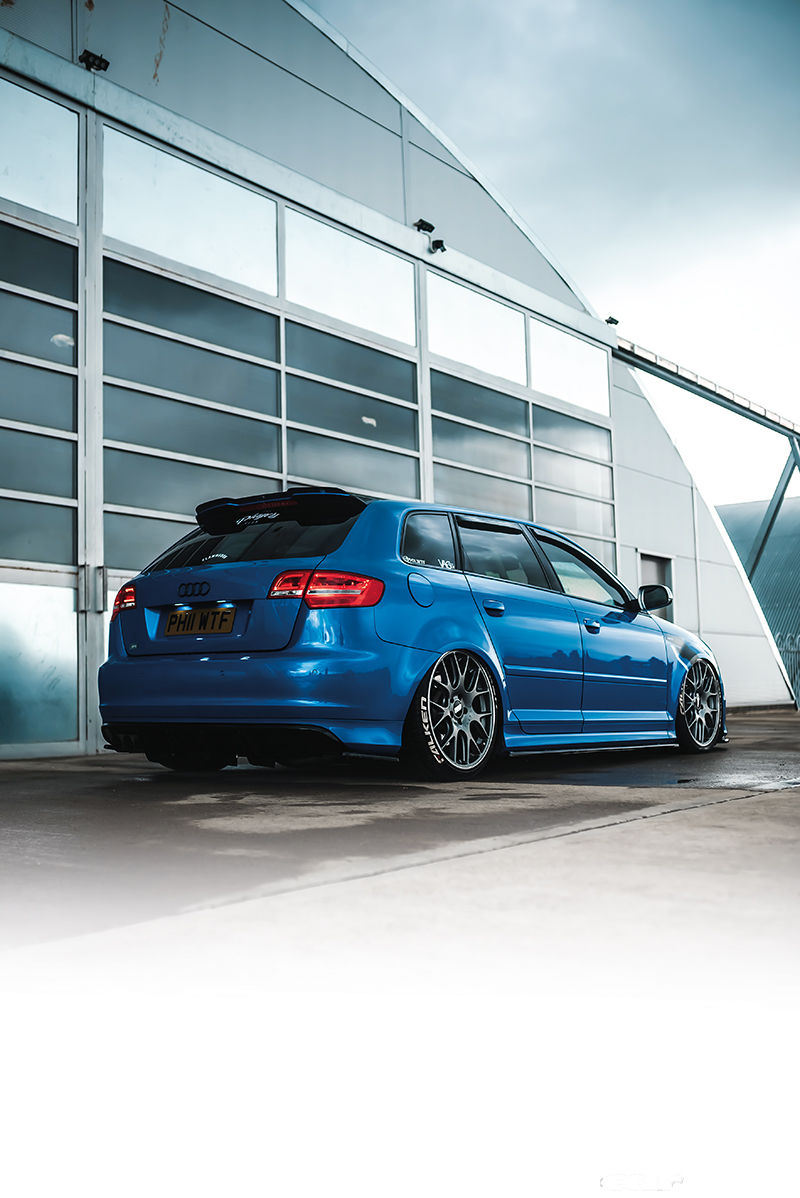
“It’s still really set up for track use, but I only did the two track days before I put the air ride on and it hasn’t been back since,” says Phil. “Despite the rumours, air ride holds up well, even with just shy of 400hp. Well, apart from the time the nearside front bag rotated 180 degrees and forced the leader line into my inner rim and tyre, making the cabin smell like a fish market. It’s because everything is polybushed, which caused too much vibration. One grubscrew and aerospace Loctite later… job’s a good ‘un.”
Visually, the bagged Audi S3 also had the advantage of the Audi parts bin, and some desirable OEM+ upgrades to choose from. Phil tracked down a pair of RS3 wingback Recaros in the same black leather as the under-bolstered factory S3 seats, then swapped out every piece of dashboard trim for carbon fibre, matched to the spokes of its RS6 steering wheel. The APR transmission map shows a little extra useful information in the instrument cluster, while the vent-mounted boost gauge is positioned for quick glances without looking like a garish afterthought against Audi’s muted cabin design.
Not that the matching trim counts for much, given that the rear bench was retired as part of the same process. Pop open the rear doors and there’s a substantial half-cage colour-matched to the RS3 seatbacks, protecting the centrally-mounted air tank and associated hardware just in case it heads out on track again. It’s a hint of GTI Clubsport inspiration, but very much home grown.
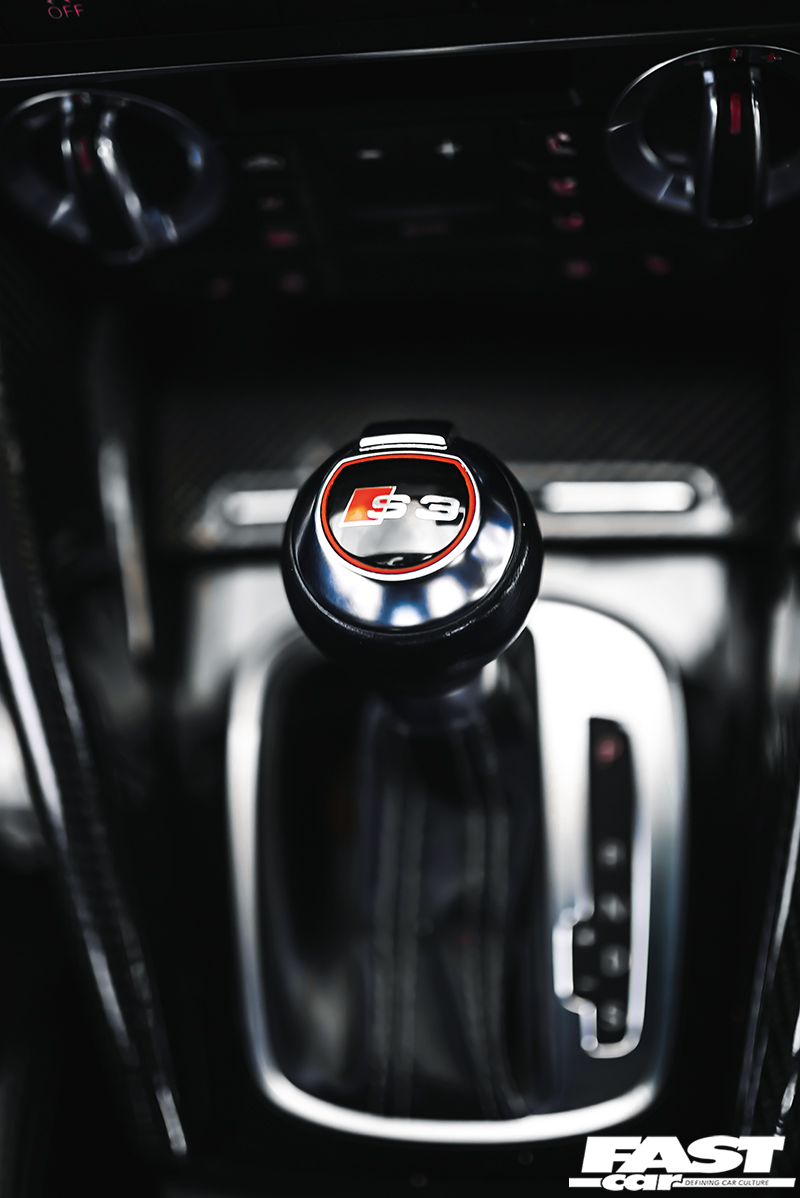
“I really liked the thought of doing the interior myself,” Phil continues. “So, I gave myself the target of doing a full boot build and found a couple of YouTube tutorials showing how to upholster. It worked an absolute dream. I did all the mockups in cardboard in my mate’s tatty bike shed, then went to Jewsons for MDF, Amazon for the fabric and foam, Tesco for Stella and had it all done in a heavy weekend. Show car… let’s go!”
Aside from the low-slung touring car stance, there’s not much that gives the game away. The RS3 honeycomb grille slots neatly into the S3 nose, the spoiler and rear bumper were transferred from the same car, while the side skirts and splitter are from Maxton Designs. It’s a tough look, and an evolution stalled slightly by not following the crowd.
“I’ve always loved carbon fibre – we’ve got a section at work called the Composite Technology Facility, and it’s where they do the fan cases for the TP400 engine on the Airbus, some made from Kevlar, some out of carbon fibre. It’s an amazing material, and I’d always wanted it on my car. Mainly for aesthetics, but it has its perks being lightweight,” he explains.
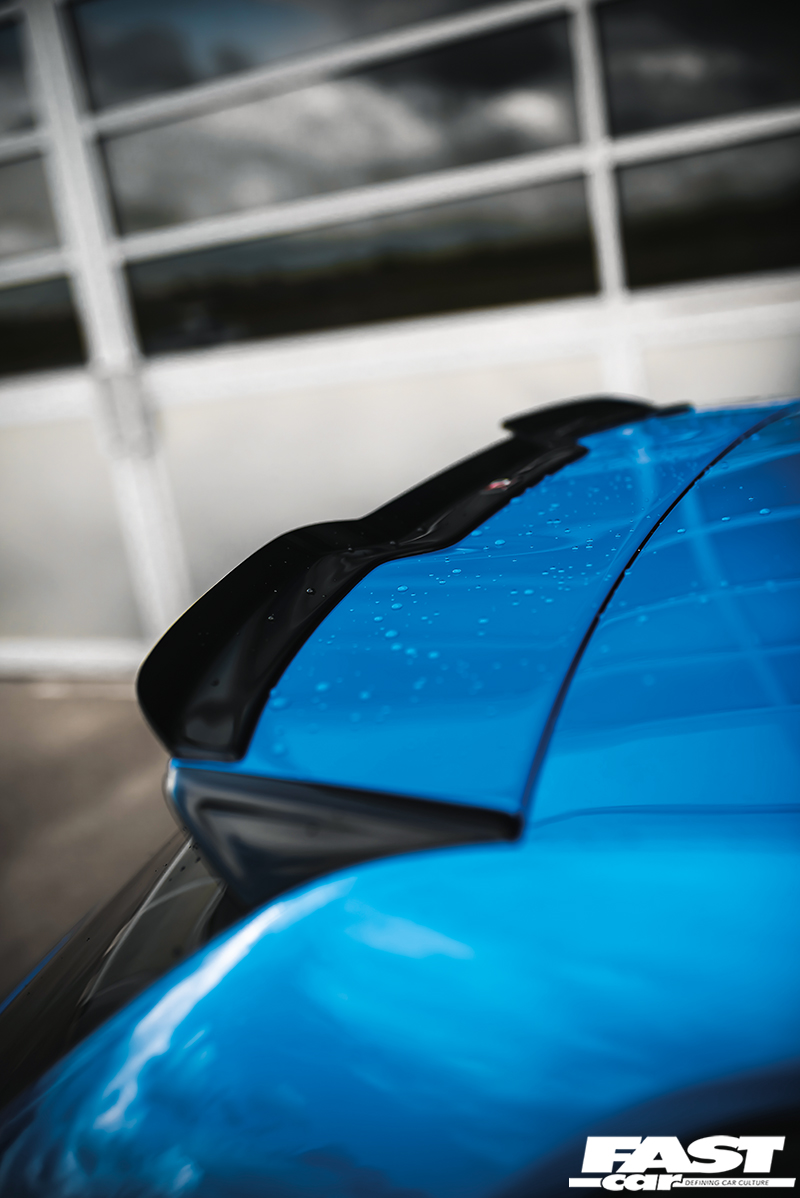
“Unfortunately, the composites market, for these cars, literally doesn’t exist at all. There are loads of stuff for the Mk6 GTI and R – bonnets, wings, anything – but for the A3 it’s impossible in the UK unless you get it custom made. I’ve been lucky as I’ve found a company which has taken mine on to start developing and testing parts, so I’ve got a bonnet, wings, and front bumper on the way.”
In the meantime, having scaled back on the track day plans, the bagged Audi S3 is continuing to evolve. Since our shoot, the CH-Rs have made way for a set of MB Design LV1s, and the visual impact alongside that sidewall-tucking stance has won it inside spaces at shows. It’s an all-rounder so effortless that it’s left room for old habits to creep in in the background – like the bikes he grew up with, there’s a slow-burner competing for attention.
“I’ve had my own ’89 BMW E30 for a couple of years now, my dream car. It’s an absolute rust machine but I’m just getting into the restoration with hopes of completing it in the next three-ish years. It’s a long way off, but I’ve got the important parts sorted – the first thing I bought for it was the reg plate: E30 WTF,” he tells us, laughing.

It’s a sizeable advantage for not taking the easiest route. With a leg-up from the Golf R’s popularity, Phil’s bagged Audi S3 has all the familiar hot hatch capabilities but with an even wilder wild side than Audi packed into the RS3. And all without taking a step into the unknown.
Tech Spec: Bagged Audi S3
Engine:
1984cc four-cylinder turbocharged petrol (CDL), APR Stage 2+ with transmission control unit (TCU) upgrade, ITG induction kit, APR race front-mount intercooler, Milltek 3in turbo-back exhaust (non-resonated), Trackslag 3.5in downpipe, APR runner flap delete, Loba Motorsport high pressure fuel pump, RS4 fuel return valve, R8 coil packs, iridium plugs, polyurethane engine and gearbox mounts
Chassis:
Air Lift V2 management, Air Lift Performance Series struts, Bilstein shocks, H&R 24mm (front) and 26mm (rear) anti-roll bars, polyurethane wishbone and subframe mounts, AP Racing four-piston calipers, Vagbremtechnic 340mm (front) and 335mm (rear) grooved discs all round, 19×8.5 ET49 BBS CH-R wheels, 225/35 Falken FK510 tyres
Exterior:
RS3 grille, RS3 spoiler, RS3 rear bumper, Maxton Design splitter, sideskirts and spoiler, custom diffuser, tinted windows, all badges removed
Interior:
Custom RS3 ‘wingback’ Recaro seats, custom C7 RS6 steering wheel, carbon centre console grab handles, carbon fibre dashboard trim and end caps, custom boot build and rear seat delete, custom roll cage (painted white), NewSouth Performance boost gauge

